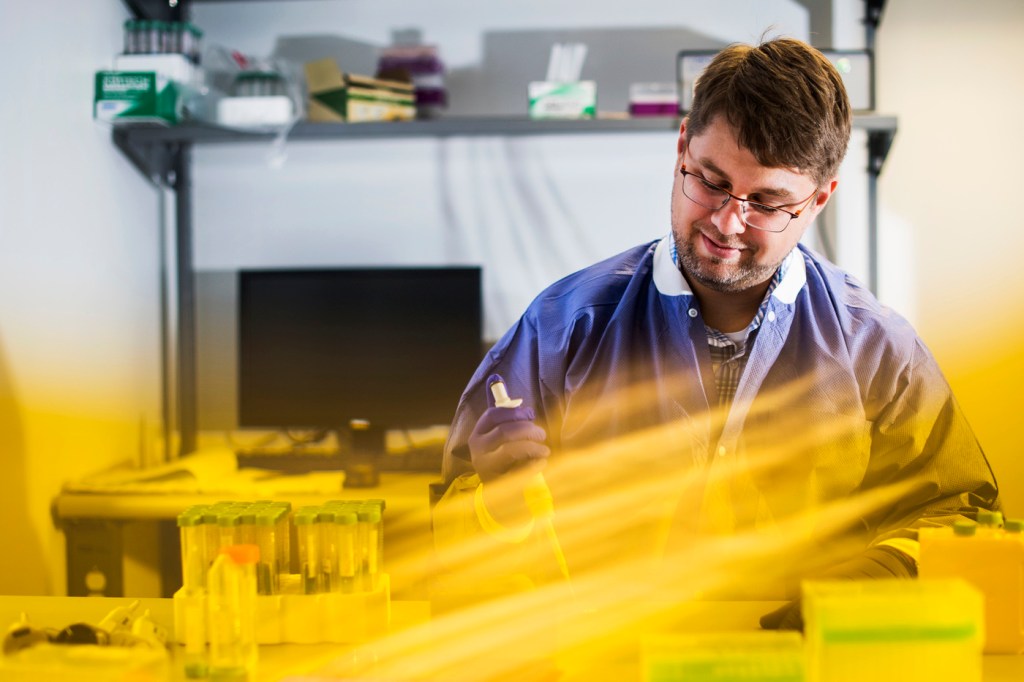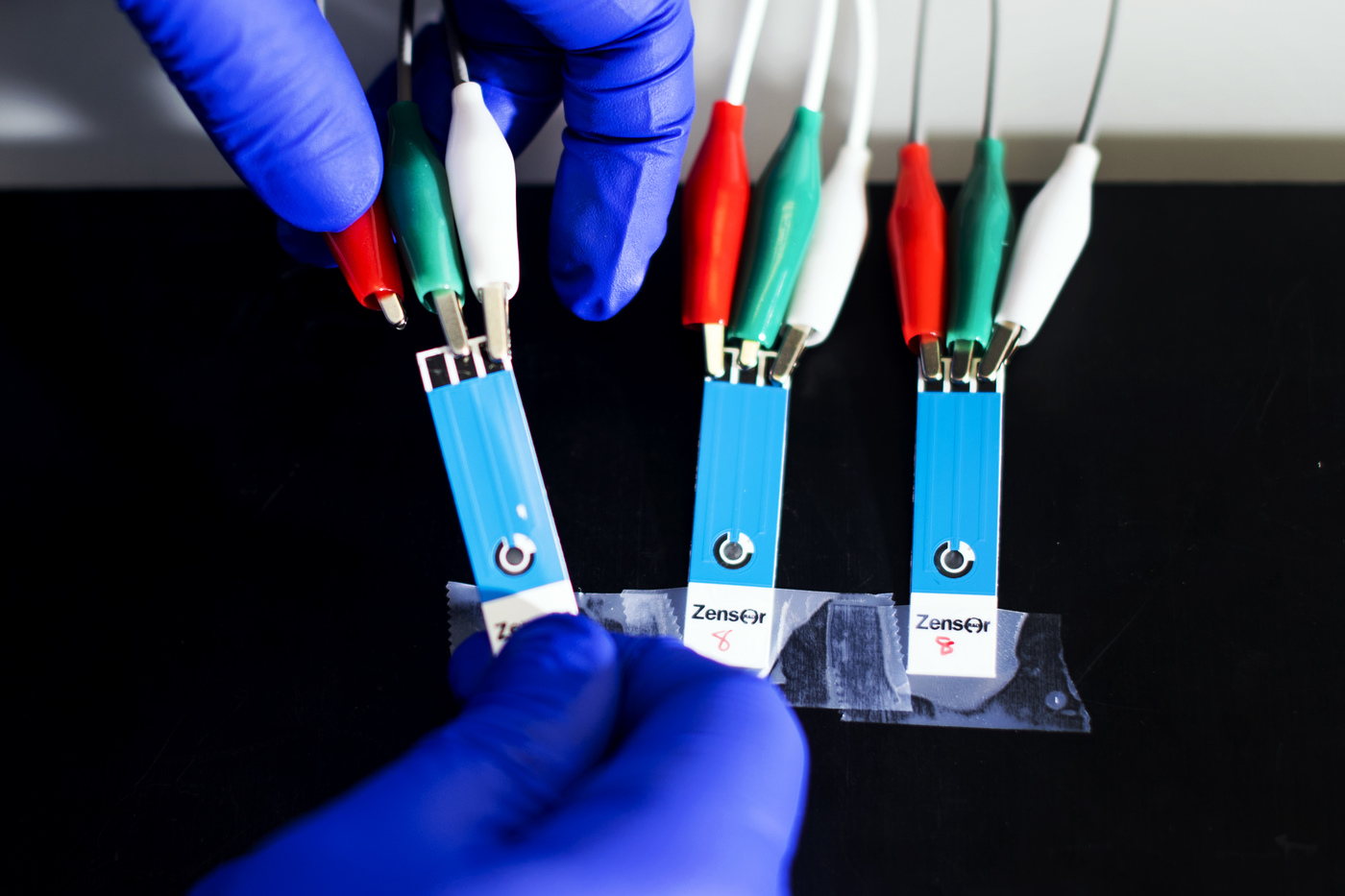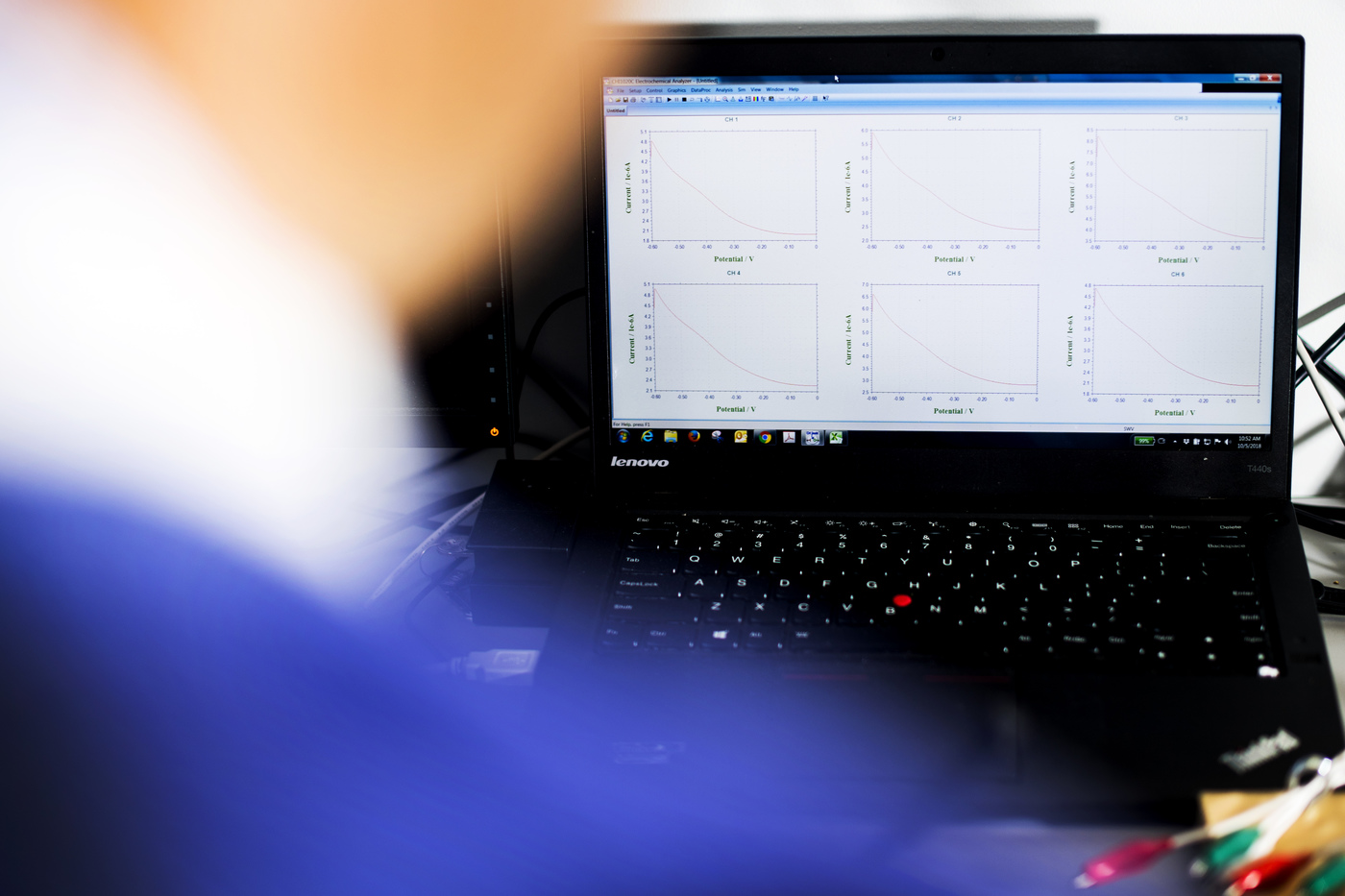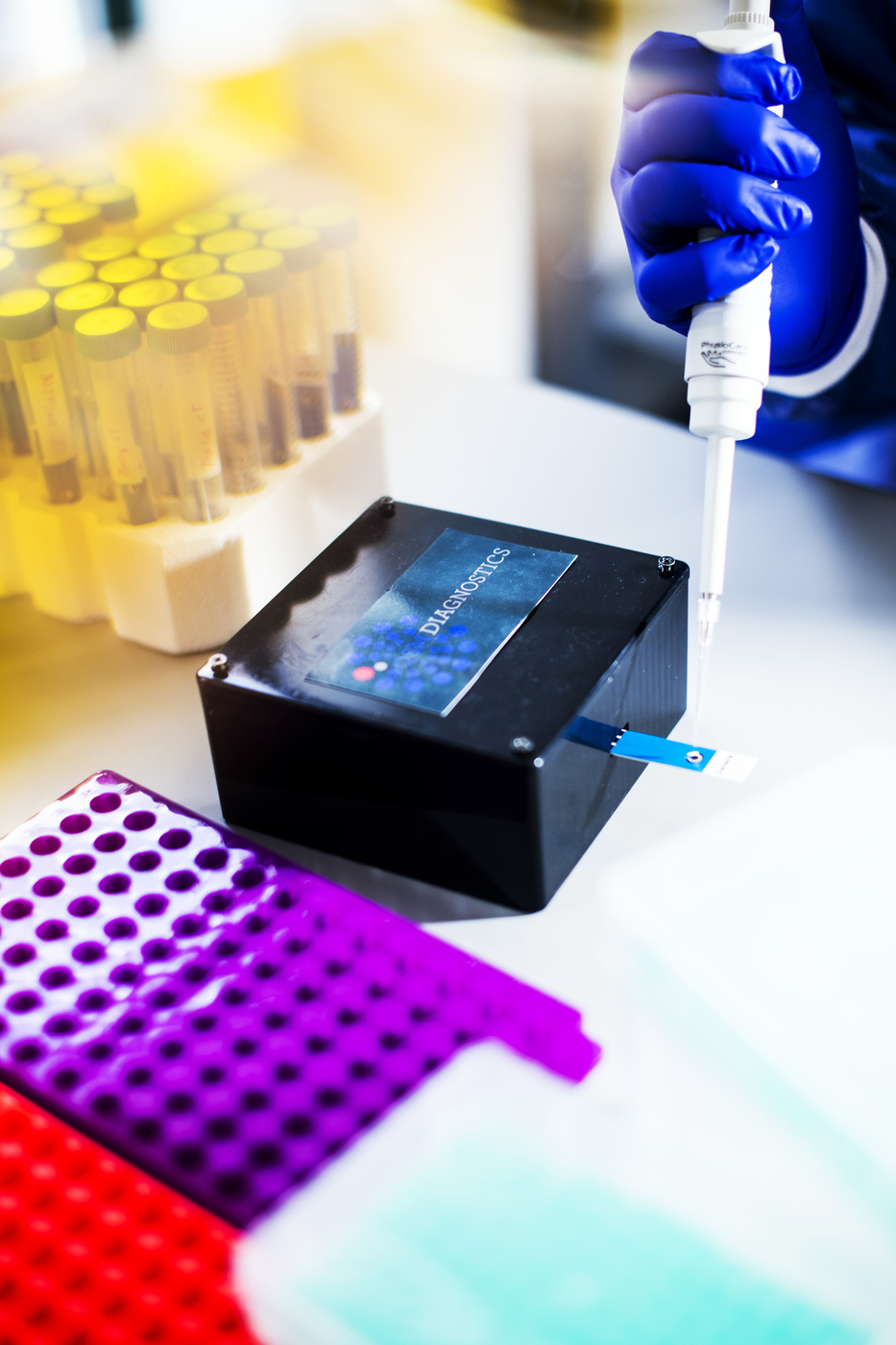Does your dog have a bacterial infection? This test could tell you in two minutes.

Want to know which bacteria are making your dog or cat sick? Northeastern professor Edgar Goluch has started a company to get that answer in minutes, instead of days.
When doctors suspect a bacterial infection, they often take a sample of the patient’s blood, urine, or mucus and send it to a lab. There, the bacteria in the sample are allowed reproduce until there are enough of them to identify.

Photo by Adam Glanzman/Northeastern University
Goluch, who is an associate professor of chemical engineering, builds sensors to identify bacteria by the specific chemicals they produce. This can be done in minutes, and doesn’t require a sample be sent to the lab. It would allow doctors to prescribe the right antibiotics immediately, and potentially help to cut back on the overuse of antibiotics, Goluch said.
With the help of Northeastern’s resources for new entrepreneurs, including IDEA, the university’s student-run business accelerator, Goluch has been able to turn his technology into a company called QSM Diagnostics.
The company’s first product, a sensor that is capable of identifying the bacteria in urinary tract infections in dogs and cats, will likely be on the market in 2019.
“There’s a huge need there,” Goluch said. “There’s actually far less being developed for animals than there is for humans.”

Photo by Adam Glanzman/Northeastern University
That’s one of the lessons that Goluch learned from working with mentors from Northeastern’s Health Science Entrepreneurs and Resources for Engineering Ventures programs: There has to be a market for your product.
“As researchers, we’re trained to discover new things,” said Goluch, who received funding from IDEA to develop a prototype. “But to make a business you need to know what you’re going to use it for. The application and the need have to be there.”
Goluch didn’t set out to start a company. He was working on sensor technology when he learned of a group of chemical compounds produced by different bacteria. Bacteria use these molecules, called quorum-sensing molecules, to signal to each other.

Photo by Adam Glanzman/Northeastern University
“They help the bacterial species coordinate their activities,” Goluch said. “They basically use this chemical language to communicate with each other.”
Each type of bacteria speaks its own unique “language.” Goluch originally planned to use his sensors to learn more about the bacteria by tracking these chemicals. But more commercial uses quickly became clear.
“It’s a molecule that is produced in high quantities and it’s very unique. It seems like the perfect biomarker for a diagnostic test,” he said.
In 2014, Goluch founded QSM Diagnostics (the acronym stands for quorum-sensing molecules) to develop his lab discovery into a usable product. The company recently drew the interest of a venture capital firm, which provided funds and access to a team of engineers to help develop the product.
While the company’s first product is for the veterinary market, Goluch expects to develop technology for human use in the future.
“The sensor is going to work the same way,” he said. “A fair number of the bacteria that cause infections in humans cause infections in animals. They go back and forth.”
“If you can detect it in animals, it will work well in humans as well.”